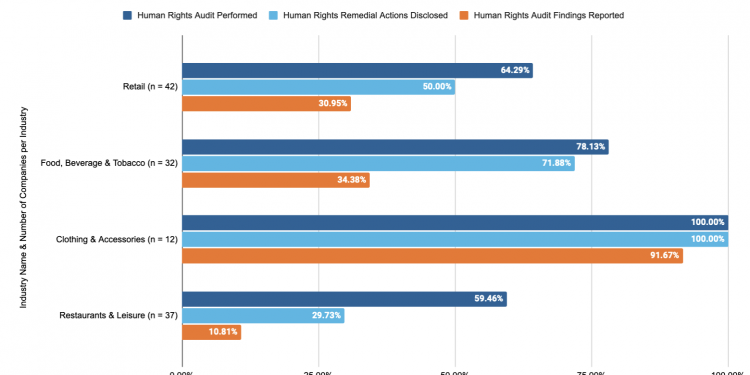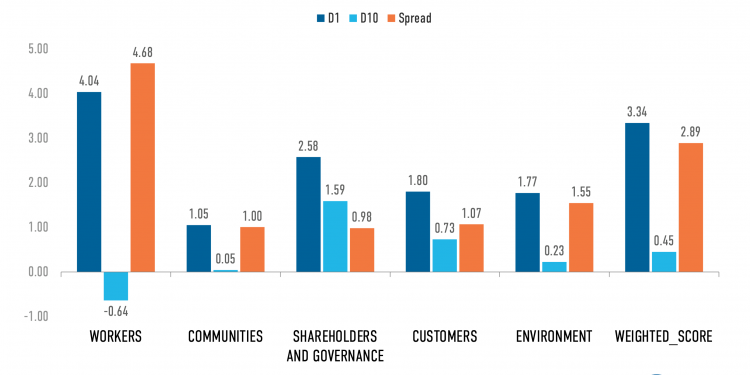6 Ways Your Company Can Better Support Working Caregivers
The family caregiving demands faced by U.S. workers — from having and raising children to tending to ill or aging family members — has reached “crisis” levels, according to a recent study by Harvard Business School.
According to the study, 73% of workers reported having some caregiving responsibilities, and about one-third of workers had quit a job due to their caregiving demands. The top reasons cited for leaving a job were caring for a newborn or adopted child, but other common reasons included caring for a sick child or older adult with daily-living needs.
The researchers found that employers are “largely oblivious” to the immense strain caregiving can place on their employees. And this is a problem for those companies, because employees overwhelmed by caregiving duties tend to be far less productive and far more likely to quit.
“Care obligations has become a principal reason for voluntary turnover,” says Joseph B. Fuller, the study’s co-author, a professor of management practice at Harvard Business School and co-chair of its Managing the Future of Work initiative.
Interestingly, the voluntary turnover rate due to caregiving is highest among highly skilled, highly paid, and talented workers — because these workers tend to have the cash reserves to weather a period of unemployment and feel more confident they can find another job quickly when needed.
Productivity loss due to absenteeism (missing work) and presenteeism — when people show up to work but aren’t really working — are also significant.
But it’s not all bad news: JUST Capital research shows more and more companies are supporting working families through paid leave to new parents. This year, 41% of the companies we rank reported providing new parents with paid parental leave, and of these, 24% (or 90 companies) did not disclose parental leave last year.
We’re seeing that companies are increasingly prioritizing work-life balance for working caregivers, though there’s still room for improvement — which is why we’ll continue to track performance on this important issue.
In the meantime, companies have to understand the importance of supporting employee caregivers through the benefits and policies they offer, Fuller says. Corporate leaders can’t assume that because employees aren’t broadcasting the stress that caring for family members places on them that they’re not experiencing it.
So what can employers do? First, Fuller says, they should work to create a culture that demonstrates an understanding and openness about the demands faced by caregivers. That starts at the top and with leaders talking about their own caregiving demands and work-life balance goals.
“If there’s a c-suite executive who has a child with special needs and he or she discusses that, the added pressure and the compromises they make, that gives psychological permission to any employee to discuss that,” Fuller says. “They don’t have to feel ashamed talking to their own supervisor about their caregiving obligations and the accommodations they might need.”
Akamai CEO Dr. Tom Leighton – who we spoke with in last month’s Quarterly JUST Call – is a great example of someone doing this right: His transparency about his own caregiving experiences as a father sets a great example for his employees to take leave when they need it.
In addition to transparency, employers should do more to understand what their employees’ caregiving obligations are — and what kinds of policies and benefits would help them most. This can be done through employee surveys. Then, they should work to implement those policies and benefits.
Some executives may automatically assume that generous paid leave and paid time-off benefits help caregivers the most. And while they are beneficial, there are other things they can do. Here are six ways companies can greatly help working caregivers:
1. Provide More Flexibility
Allowing employees to work hours at least somewhat tailored around their personal needs can significantly reduce voluntary turnover, because scheduling constraints are a top reason people with caregiving obligations quit, Fuller says.
Letting a parent work, say, 6:30 a.m. to 2:30 p.m. instead of the traditional 9-to-5 schedule can allow them to be home when their child gets off school — so they don’t have to worry about finding and paying for after-school care.
Likewise, allowing someone to work from home occasionally or regularly not only reduces the time burden of commuting, but it gives them greater flexibility to accommodate their caregiving needs.
Most highly ranked employers among our 2020 Rankings of America’s Most JUST Companies provide flexible scheduling and work arrangements to some degree, though some are particularly progressive. One such example: VMWare, a cloud infrastructure company, lets every employee from c-level down to entry-level set their own work schedule, so that every employee can design a schedule that fits best with their lifestyle.
2. Give Workers More Paid Leave
Giving employees more paid time off — whether that’s more PTO days or paid sick leave — is a major relief to caregivers, who are more likely to need the extra time. Consider a parent of a child with special needs or an employee with an elderly parent and the time they may need to take off for doctors appointments.
Fuller foresees more companies getting rid of caps on the number of PTO days and moving toward unlimited PTO policies that allow workers to decide how much time they take off — assuming of course they fulfill their work requirements. (Contrast that with the 25% of American workers who get no paid time off whatsoever.)
Workday, an enterprise cloud applications provider, is just one example of a company that’s providing its workers with unlimited PTO.
Want to read more stories like this?
Our FREE weekly newsletter about the future of capitalism and the movement to build a more equitable marketplace in America.
3. Treat Mothers and Fathers Equally Under Paternity Leave Policies
Giving both new mothers and fathers the same amount of leave is not only fair, but it also takes the burden off mothers to provide most of the caregiving to newborns by allowing fathers to take off to fulfill their responsibilities and desire to spend time with their new children.
Without equal leave, mothers can feel overwhelmed and fathers may face extra stress by having to help with childcare from work or having to take PTO.
More companies are moving toward paternity leave policies that provide mothers and fathers with an equal amount of paid time off. PayPal Holdings, for example, offers its mothers, fathers, same-sex spouses, and domestic partners eight weeks of paternity leave or “parental bonding leave” at 100% of their base pay.
Akamai leads is this area, offering mothers 18 weeks of paid parental leave and fathers 10. In discussing how pivotal it was for him to take paternity leave as a first time father, Leighton said it was the “hardest job I ever had. But it made a huge difference to me and to our family to be able to do that. A wonderful experience, taking many months off to be a primary caregiver.”
4. Provide Adoption Assistance
Beyond looking after the post-childbirth needs of parents, companies also need to consider the needs of people looking to adopt — which can be equally if not more stressful.
With the average cost of adoption now more than $40,000, employees who adopt can benefit from both financial and childcare relief. Some companies provide adoption benefits, such as offering $5,000 or $10,000 to parents who adopt children. But more have expanded their paid leave policies to include adoptive parents. Netflix, for example, provides one year of paid leave to new parents, whether those parents adopted or not.
5. Create a Mother’s Room in the Office
Once mothers return to work after the birth of the child, finding a comfortable and relaxing place in the office for lactation can be a challenge. Companies can support new mothers by creating special rooms specifically for that purpose.
Amazon, for example, offers Mothers’ Rooms with comfortable chairs, hospital-grade breast pumps, refrigerators, microwaves, sinks, and doors that lock. This makes it easy for new mothers to get privacy for pumping milk during the workday without the stress of having to use an employee restroom or another area where they could be interrupted.
6. Partner with Organizations That Can Help
More companies are finding they can relieve the caregiving demands of their workers by commissioning third-party organizations that can provide relief, Fuller says. One company he’s familiar with provides care coordination to employees as a benefit — helping them find the right long-term care facility for an elderly parent who lives in another state, for example.
Some companies offer, say, up to five days of backup child, adult, or pet care through Care.com’s Care@Work program, he says.
Companies that address the caregiving demands of their employees will ultimately win the talent wars of today and the future, Fuller says. “If your institution can provide an extra level of support and engagement with your workers — tangible signals that you’re allowing people to live their best, most gratifying life — that can be a very big competitive advantage.”
To stay up to date on all the latest moves companies are making to prioritize workers, customers, the environment, and more, sign up for our free weekly newsletter, The JUST Report, today!






